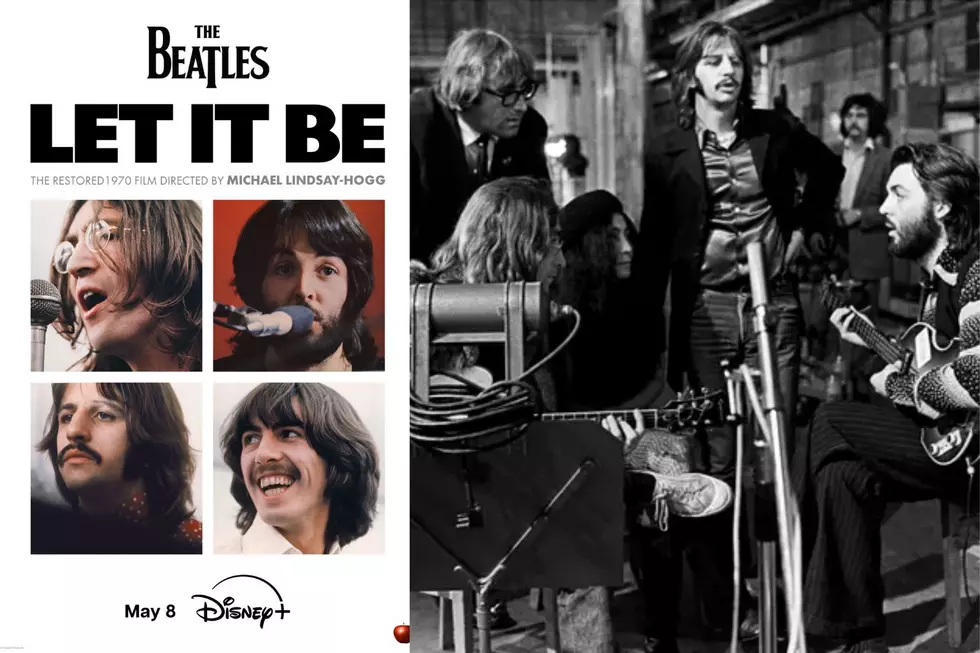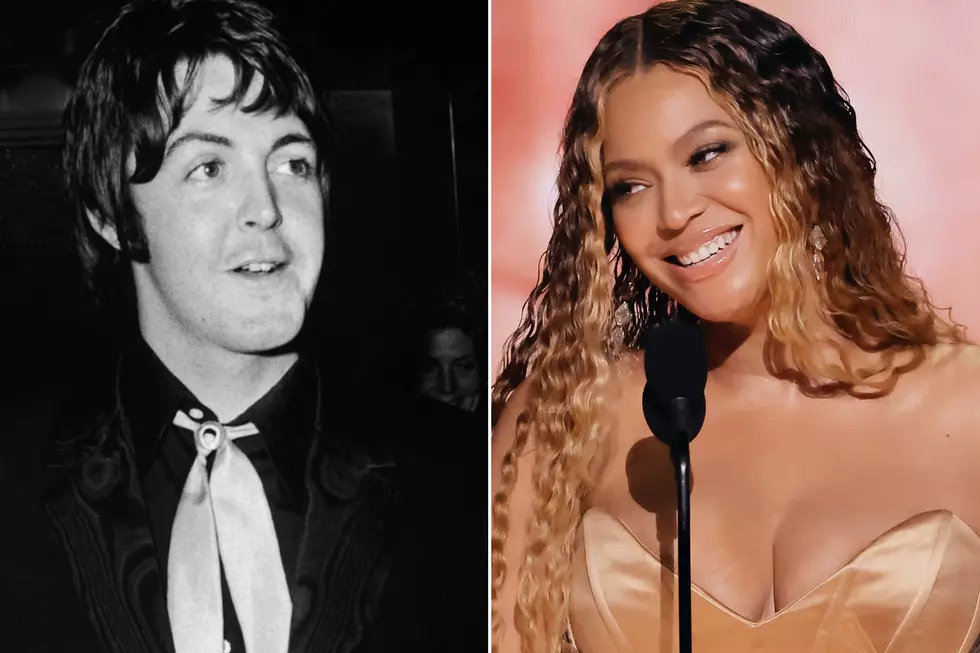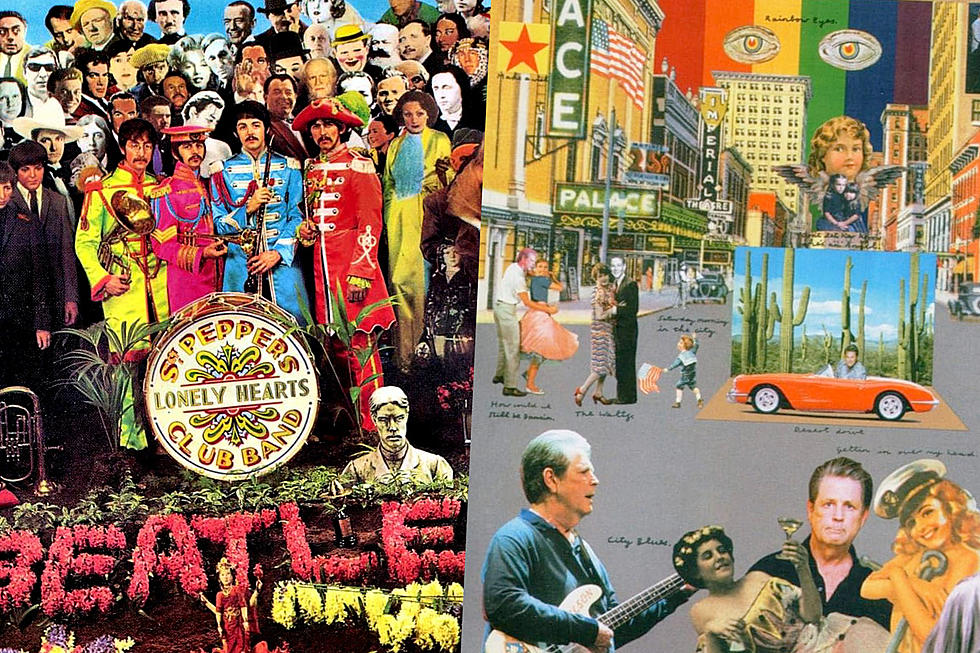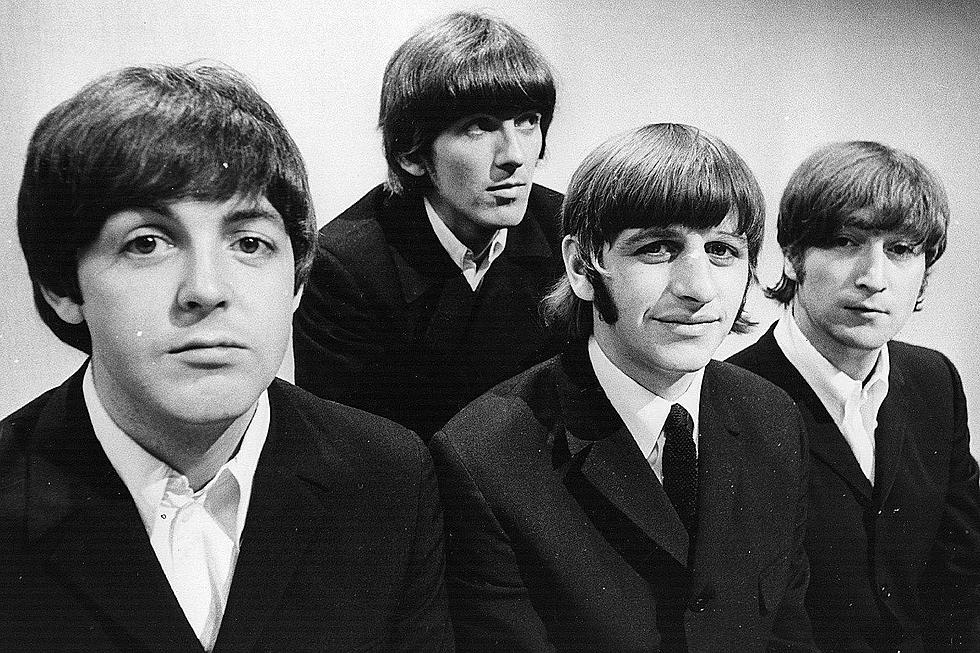Paul McCartney Disguises the Beatles as ‘Lonely Hearts Club Band’: The Story Behind Every ‘Sgt. Pepper’ Song
By 1966, the four Beatles had more than their fill of Beatlemania. The rampant touring, the screaming girls, the “bigger than Jesus” controversy – to paraphrase a George Harrison song, it was all too much. So the band made a fundamental change in how they approached music. After August 1966, the lads would cease touring to focus only on being as creative as possible in the studio.
But the Beatles didn’t just stop touring, they stopped releasing anything for the rest of the year. John Lennon went off to make a movie, How I Won the War, and the other three Beatles went on vacation. There was radio silence, as far as the band’s musical output was concerned, for nearly six months. That might not seem like much time now, but in the era of 1964-66 – when there was a new Beatles single, a concert, a movie, a TV appearance, an LP, every time fans turned around – this silence was deafening.
When the Beatles finally reappeared in February 1967 with “Strawberry Fields Forever” and “Penny Lane,” every little thing had changed. Mop tops gone, facial hair present. Tinny-sounding concerts replaced by psychedelic videos. And music that had gotten more complicated, more ornate, more intricate, more strange – at least in comparison to what most pop stars were doing. The Beatles, as larger-than-life figures, now meant something totally different than they had seemed to a half-year ago.
As the band was going through this transformation, which was much more organic than it must have seemed to your average 1966-67 teenybopper music fan, they were seeking anything to remove themselves from their previous image. For Paul McCartney, that meant the possibility of the Beatles literally becoming another group: the “Lonely Hearts Club Band.” Now the quartet wasn’t going to permanently switch monikers, but McCartney got a notion in the fall of 1966 that it might be easier for him and his bandmates to hurdle expectations if they wore the costume of another act.
“I took an idea back to the guys in London: ‘As we’re trying to get away from ourselves – to get away from touring and into a more surreal thing – how about if we become an alter-ego band, something like, say, ‘Sgt. Pepper’s Lonely Hearts’?” McCartney said in The Beatles Anthology. “‘I’ve got a little bit of a song cooking with that title’.” That idea had been “cooking” since McCartney had flown back from a holiday in Kenya with Beatles road manager Mal Evans. The two were joking about the salt and pepper packets during meal service on the plane and what the “S” and “P” might stand for. The name “Sgt. Pepper” came out of the conversation and stuck in McCartney’s brain.
But it took a while for the Beatle bassist to nail down the idea. As 1966 turned to 1967, the boys worked on “Strawberry Fields,” “Penny Lane,” “When I’m Sixty-Four” and other tracks that they assumed would end up on whatever the new LP would become. It was late January when McCartney began to seriously write a song about the fictional sergeant. Evans, who had been present for the creation of this man, also aided McCartney with the song, as they worked on the tune on the multi-colored piano in McCartney’s house. Although the Beatle told the roadie that he would be credited on the song, he and Lennon later decided that “Lennon/McCartney/Evans” didn’t look so good and Evans became a silent partner in the tune.
“After you’ve written it down, you start to think, ‘There’s this Sergeant Pepper who has taught the band to play, and got them to play,’ so that, at least, they found one number,” McCartney said in 1967. “They’re a bit of a brass band in a way, but also a bit of a rock band because they’ve got the San Francisco thing.”
After McCartney presented the song and its title to Lennon, he perceived a West Coast influence, what with the crazy names coming out of the Bay Area at the time. (“You know, when people were no longer the Beatles or the Crickets,” Lennon said in All We Are Saying, “they were suddenly Fred and His Incredible Shrinking Grateful Airplanes, right?”) So McCartney’s concept was that this “Lonely Hearts Club Band” would be both on the cutting edge, and something almost perversely traditional.
On the advice of another Beatles associate, Neil Aspinall, McCartney crafted Sgt. Pepper as a sort of emcee for this pretend concert. So the song “Sgt. Pepper’s Lonely Hearts Club Band” became an introduction to the whole affair. It turned into an overture, unlike anything the Beatles had yet created. That shows in the composition’s structure, which is arced like a big entryway. Its order is this: introduction-verse-bridge-chorus-bridge-verse-conclusion/transition. It rises, rises, rises to the declarative chorus (“We’re Sgt. Pepper’s Lonely Hearts Club Band … ”), then descends, descends, descends until it becomes time to segue to the next tune. On the way, McCartney conjured another character, the one-and-only Billy Shears.
“Billy Shears is another name that sounds like a schoolmate, but isn’t. Ringo [Starr] is Billy Shears" on "With a Little Help From My Friends," McCartney said. “It just happened to turn out that we dreamed up Billy Shears. It was a rhyme for ‘years’ … ‘band you’ve known for all these years’… We thought, ‘That’s a great little name.’ It’s an Eleanor Rigby-type name. A nice atmospheric name and it was leading into Ringo’s track. So, as far as we were concerned, it was purely and simply a devise to get the next song in.”
At the time of writing and recording what would become the first song on Sgt. Pepper, Lennon and McCartney hadn’t written “With a Little Help From My Friends.” The Beatles just knew they’d be leading to … something.
That’s evident in the rhythm tracks the band captured on the first day of sessions (Feb. 1, 1967 at London’s EMI Studios) to record the song “Sgt. Pepper’s Lonely Hearts Club Band.” The final moments of the just-over-two-minute-track feature the quartet vamping in a sort of holding pattern, knowing that they’d come up with a follow-up tune later to complete this musical causeway.
There are a couple of other interesting notes – a pair of firsts – to discuss about the first day of recording on this song. Under the eyes and ears of producer George Martin and engineer Geoff Emerick, the Beatles did not set up in their standard formation, which would be Lennon on guitar, McCartney on bass, Harrison on lead guitar and Ringo Starr on drums. McCartney angled for a switch.
“Paul wanted to play rhythm guitar on the backing track instead of bass – the first time I’d known him to do that,” Emerick said in Here, There and Everywhere. “He simply told John, ‘Let me do the rhythm on this; I know exactly what I want.’ John accepted Paul’s instruction without a word of protest and simply picked up a bass guitar.”
Although McCartney was a skilled guitarist (evidenced by the solo he later overdubbed on the song to Harrison’s reported chagrin), Lennon wasn’t much of a bass player. So his part was recorded on a separate track, using a direct injection box that plugged the instrument straight into the recording console. EMI pioneered the innovative DI method, which by avoiding taping the sound of an amplifier, prevented any sound bleeding onto the recording of the other instruments. Not only did that make it easy for Martin and Emerick to replace the sound of Lennon’s bass playing with a later overdub of McCartney’s, it also gave more power and prominence to McCartney’s rendition on the final version,
On day two of recording the “Sgt. Pepper” song, they focused on voices, with McCartney singing blistering lead on the verses and the others joining elsewhere. McCartney, Lennon and Harrison tracked three-part harmonies on the song, and sang together on the chorus (with Lennon the most prominent voice) and the second bridge (which also featured Starr, Evans and Aspinall – a total of six voices).
Feeling they had the track nailed, the Beatles set aside “Sgt. Pepper” for more than a month, until the song’s distinctive French horn quartet made an appearance on March 3. That solidified McCartney’s concept of the old with the new – a brass quartet interlude in the middle of a raucous rock song. As McCartney had done on “Penny Lane,” he sang the part he wanted the brass players to contribute.
“They didn’t really know what they wanted,” John Burden, a horn player and former member of the London Symphony Orchestra, recalled in The Complete Beatles Recording Sessions. “I wrote out phrases for them based on what Paul McCartney was humming to us and George Martin. All four Beatles were there but only Paul took an active interest in our overdub.”
McCartney was also the one, according to Emerick, who pushed for the famous sound effects with which “Sgt. Pepper” begins and continue to intrude on the song. McCartney liked the idea of creating “atmosphere” on the album (“Get the band warming up, hear the audience settle into their seats, have the songs as different acts on the stage”).
And it just so happened that Martin and Emerick had the sound of a band warming up. They had purposely recorded the noise of the orchestra that had contributed to “A Day in the Life” on Feb. 10 at EMI. So, some of that ambient noise was attached to the start of the song, before “Sgt. Pepper” blares his way in. In addition, the lads went digging through the EMI sound effects archives to add the appearance of a crowd applauding and laughing at some unseen antics – a memory McCartney had from listening to comedians on the radio as a child. With those effects, the opening number was complete on March 6.
Except the song still didn’t have an ending. After “With a Little Help From My Friends” was written and recorded, Martin, Emerick and the band worked to achieve a proper segue from track one to track two. Their method for masking the cut between the two songs: blood-curdling screams taken from the Live at the Hollywood Bowl recordings. Even deep in the studio, the Beatles couldn’t escape the sounds of Beatlemania.
At Aspinall’s suggestion, the band also recorded a quick, heavy reprise of “Sgt. Pepper’s Lonely Hearts Club Band” to appear later in the album. It was to lend the LP the appearance of a continuing concept, something that Lennon admitted was non-existent: “It works ’cause we said it worked.”
Because of the swaggering authority of its lead track and its incredible mix of music, many people were fooled into thinking all of Sgt. Pepper was a real concept record, like Freak Out by the Mothers of Invention. Regardless, the song soon became a hard-charging Beatles classic, How soon? It was celebrated on stage by the Jimi Hendrix Experience, three days after the LP came out on June 1, 1967.
Although no singles were released from Pepper in 1967, “Sgt. Pepper’s Lonely Hearts Club Band” (combined with “With a Little Help From My Friends” and a B-side of “A Day in the Life”) was issued by EMI/Capitol in 1978, becoming a modest hit. A year later, McCartney, Harrison and Starr reunited to play the famous song at Eric Clapton’s wedding to Pattie Boyd – Harrison’s ex-wife. McCartney has continued to play it on his solo tours, and even collaborating with U2 on a live version to kick off Live 8 in 2005. It remains one of the Beatles most famous songs, and the lynchpin of the Sgt. Pepper LP.
“‘Sgt. Pepper’ itself didn’t appear until halfway through making the album,” Martin wrote in All You Need Is Ears. “When we had finished it, Paul said, ‘Why don't we make the album as though the Pepper band really existed, as though Sgt. Pepper was making the record? We’ll dub in effects and things.’ I loved the idea, and from that moment on it was as though Pepper had a life of its own.”
42 Awesome Takes on the Beatles’ 'Sgt. Pepper's' Album Cover Art
More From Ultimate Classic Rock









